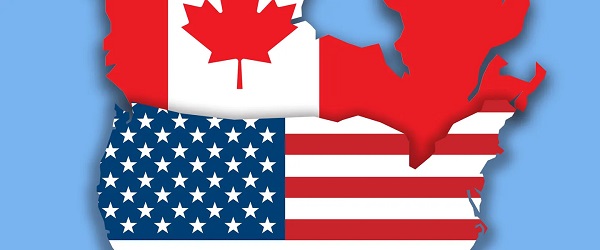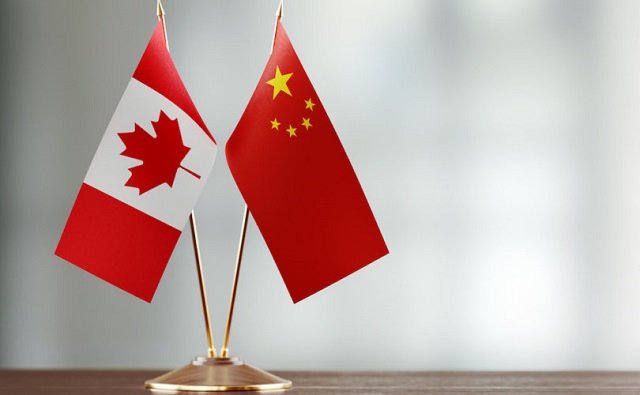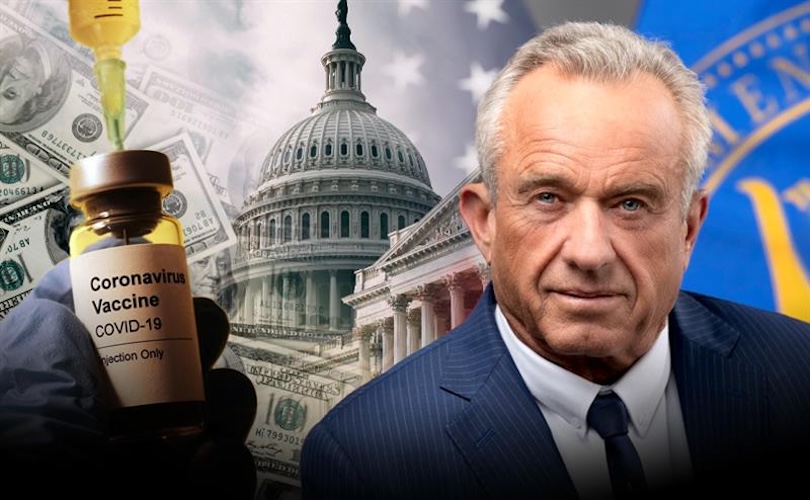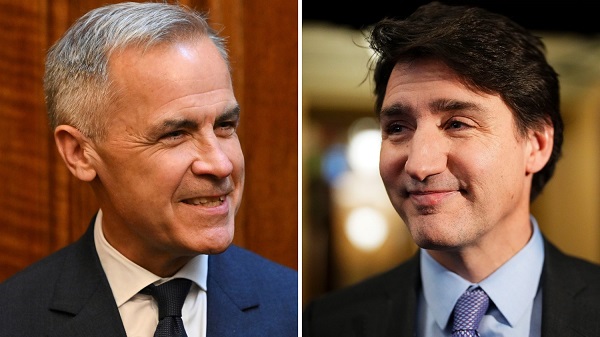Alberta
Due to spending restraint Calgary and Edmonton spend significantly less per person than Alberta’s highest-spending municipalities

From the Fraser Institute
The per-person municipal government spending levels in Calgary and Edmonton—Alberta’s largest and most populous cities—are near the average
spending level of the province’s major municipalities, finds a new study by the Fraser Institute, an independent, non-partisan Canadian public policy think-tank.
“While there’s always room for improvement, the municipal governments in Calgary and Edmonton have done a better job at restraining spending than many other municipalities in Alberta,” said Austin Thompson, senior policy analyst at the Fraser Institute and author of Comparing Per-Person Expenditure and Revenue in Major Albertan Municipalities, 2009-2023.
According to the study, which compares the finances of 25 Alberta municipalities, in 2023 (the latest year of comparable data), Edmonton ($3,241) and Calgary ($3,144) spent close to the per-person spending average ($3,239) among the 25 municipalities, and significantly less than the highest spenders, which include Grande Prairie County ($5,413), Red Deer County ($4,619) and Lethbridge ($4,423).
Subsequently, in terms of per-person spending, Edmonton ranked 12th highest and Calgary ranked 13th highest.
Moreover, despite significant population growth, both cities restrained spending. From 2009 to 2023, Edmonton’s population grew by 38.2 per cent and Calgary’s population grew by 33.7 per cent, yet per-person spending (after adjusting for inflation) grew by 4.8 per cent in Edmonton and 2.1 per cent in Calgary.
“It’s ultimately up to Albertans to decide if they get good value for their municipal tax dollars, but it helps to compare spending levels among municipalities across the province,” said Jake Fuss, director of fiscal policy at the Fraser Institute.
Municipal government spending per person in Alberta (2023)
Municipality spending per person rank of 25
Grande Prairie County $5,413 1
Red Deer County $4,619 2
Lethbridge $4,423 3
Canmore $4,154 4
Strathcona County $4,106 5
Red Deer $3,788 6
Cold Lake $3,646 7
Leduc $3,452 8
Rocky View County $3,419 9
Grande Prairie $3,342 10
Fort Saskatchewan $3,259 11
Edmonton $3,241 12
Calgary $3,144 13
Parkland County $3,141 14
St. Albert $3,129 15
Sylvan Lake $2,859 16
Spruce Grove $2,760 17
Camrose $2,744 18
Stony Plain $2,695 19
Beaumont $2,626 20
Foothills County $2,570 21
Okotoks $2,456 22
Airdrie $2,187 23
Cochrane $2,142 24
Chestermere $1,652 25
Municipal government average $3,239
Note: This ranking excludes Medicine Hat due to its unique status as the only Alberta municipality operating both an electricity and natural gas utility. Further details are available in the study.
Comparing Per-Person Expenditure and Revenue in Major Albertan Municipalities, 2009–2023
- This study found substantial variation in the per-person expenditure and revenue of 26 major Albertan municipalities between 2009 and 2023.
- On average, inflation-adjusted per-person spending increased by 12.9% across the studied Albertan municipalities, rising from $3,001 in 2009 to $3,389 in 2023.
- Medicine Hat had the highest per-person municipal spending in 2023 at $7,132. The next highest spenders in 2023 were Grande Prairie County ($5,413) and Red Deer County ($4,619).
- Chestermere recorded the lowest per-person spending in 2023 at $1,652, followed by Cochrane ($2,142) and Airdrie ($2,187).
- Municipal expenditure grew faster than population growth and inflation from 2009 to 2023 for 21 of the 26 municipalities in the study. Five municipalities were able to reduce their inflation-adjusted per-person spending: Chestermere (-37.6%), Cochrane (-15.9%), Camrose (-13.2%), Airdrie (-2.1%), and Foothills County (-2.0%).
- From 2009 to 2023, average inflation-adjusted per-person revenue decreased by 1.9% across the studied municipalities, falling from $4,007 in 2009 to $3,933 in 2023.
- Medicine Hat had the highest per-person municipal revenue in 2023 at $8,081, followed by Canmore ($6,317) and Grande Prairie County ($5,530).
- Chestermere had the lowest revenue per person in 2023 at $1,939, followed by Beaumont ($2,498) and Foothills County ($2,583).
Alberta
Alberta health system accused of pressuring women to abort babies with Down syndrome

From LifeSiteNews
A new report has exposed how Alberta’s healthcare system pressures women to abort babies with Down syndrome.
According to a report by the Wilberforce Project, a pro-life organization, Alberta women are routinely encouraged to undergo screening for Down syndrome, only to be pressured by the medical community to abort their children.
“The underlying communication to mothers is that bringing babies with disabilities into the world is wrong,” the report stated. “‘Options’ has clearly become a euphemism for abortion.”
The report has caught the attention of pro-lifers, including Campaign Life Coalition’s Pete Baklinski.
“This is modern ableism, not medicine,” Baklinski wrote on X.
According to the report, titled “Deadly discrimination in Alberta,” most women undergo prenatal screening without fully understanding its purpose or risks, often due to unclear communication from healthcare providers, undermining informed consent.
The process, framed as a routine check, is also incredibly invasive for both mother and child. Diagnostic tests like amniocentesis and chorionic villus sampling (CVS) carry risks of miscarriage, and screening tests often produce false positives.
READ: Canada’s euthanasia regime is already killing the disabled. It’s about to get worse
“Approximately 10,000 pregnant Canadian women undergo amniocentesis each year, which will confirm around 315 cases of Down syndrome as well as result in the loss of 70 babies without Down syndrome due to the risks associated with the procedure,” the report found.
Furthermore, if expectant mothers receive a positive test for Down syndrome, their doctors will often pressure them to abort their child, warning that raising a disabled baby will diminish their own quality of life.
According to the report, upon delivering the news of the diagnosis, some doctors have told mothers, “Your life will be over” or “You should abort and try again.”
“Your baby won’t be able to feed itself or dress itself. It will be a burden on society” is another phrase often told to expectant mothers.
Unfortunately, eugenics, or killing off sick or disabled individuals, is not new for the province of Alberta. Despite being a Conservative province, Alberta was the first jurisdiction in Canada to pass a sterilization law, resulting in over 2,800 sterilizations.
To combat the ever-expanding abortion and eugenics campaign, the Wilberforce Project proposed six recommendations to improve prenatal testing practices. The changes are being presented to Alberta lawmakers in a petition signed by Albertans.
These include emphasizing optional testing, enhancing informed consent, training medical professionals to use neutral language so as not to lead women to choose abortion, requiring genetic counselors to meet people with disabilities, supporting physicians’ conscience rights, and affirming the value of all lives through medical policies.
“Women and their families need to accurately understand the purpose behind prenatal testing and not be pressured by Alberta’s medical community to terminate a pregnancy if their baby has Down syndrome,” the report concluded.
Alberta
Federal climate plan could trigger Alberta recession

This article supplied by Troy Media.
Ottawa’s emissions cap unfairly targets Alberta while claiming to serve national climate goals
Alberta could face a deep recession in 2030, driven not by global markets but by Ottawa’s climate agenda. A new analysis warns that federal plans to
cap oil and gas emissions and cut greenhouse gases would hit Alberta harder than any other province, gutting jobs, income and government revenues.
According to recent analysis by the Conference Board of Canada, a respected non-partisan economic research group, the impact of these federal climate policies would be both severe and long-lasting. As the report states:
“Given the importance of the oil and gas sector to Alberta’s economy, the province will be disproportionately impacted by the policies in the ERP [Emissions Reduction Plan]. Alberta would experience a deep recession in 2030 and would subsequently experience slower economic growth compared to our Baseline forecast. As a result, Alberta’s GDP (11.0 per cent), employment (4.1 per cent), and government revenues (9.3 per cent) would all be lower than in our Baseline scenario in 2050. Also… incomes in Alberta would be 7.3 per cent, or $3,300 lower per person.”
These are not hypothetical figures. The modelling, presented to the Alberta government in January 2025, examined a range of scenarios, including different oil price assumptions and technology adoption paths. Regardless of the outlook, one conclusion stands out: Alberta would shoulder nearly 80 per cent of all Canadian oil and gas production cuts under the proposed emissions cap.
Oil and gas account for nearly one-third of Alberta’s GDP and a major share of its government revenues. With so much of the provincial economy dependent on energy production, the consequences of these federal mandates would be disproportionately severe.
This raises serious questions about fairness, federalism and the balance of power in Confederation. Why should one province absorb the lion’s share of the cost to satisfy national targets negotiated without its full consent?
This isn’t just poor policy: it’s deliberate and destructive.
Alberta Premier Danielle Smith’s government has recognized the threat and responded by forming the Alberta Next Committee and appointing a special negotiating team. Its efforts are aimed at securing a more balanced deal with Ottawa—an “Alberta Accord” that protects the province’s core economic interests while contributing to national climate goals through technology and innovation, not coercion.
Prime Minister Marc Carney has long promoted the idea of building a green economy, and his government appears poised to continue down that path. But real transitions require co-operation. A credible climate plan cannot be built by crippling one region to subsidize another.
Alberta is already leading in areas such as carbon capture, hydrogen and clean power generation. Yet those efforts risk being undercut by federal policies that punish energy producers simply for existing.
The memory of the National Energy Program looms large. Introduced by the first Trudeau government in the 1980s, it redirected energy revenues to Ottawa, drove investment out of Alberta and triggered one of the province’s worst economic downturns. The parallels today are hard to ignore: once again, a federal Liberal government is imposing top-down energy policy with little regard for the fallout in the West.
The situation also highlights a deeper issue—the steady erosion of provincial autonomy in economic decision-making. If federal policies can devastate one province’s economy in the name of national ambition, what does that say about the future of Canadian federalism?
The numbers are clear. The proposed federal emissions cap would gut Alberta’s economy, eliminate jobs and cripple public revenues. The Smith government must escalate its pushback and build broad provincial support to stop Ottawa from repeating the mistakes of the past.
Alberta cannot afford a second National Energy Program.
Lennie Kaplan is a former senior manager in the Fiscal and Economic Policy Division of Alberta’s Treasury Board and Finance Ministry, where, among other duties, he assessed the risks of government financial arrangements with private sector business ventures. He also served as a research consultant to the Auditor General of Alberta’s 2018 audit entitled APMC Management of Agreement to Process Bitumen at the Sturgeon Refinery.
Troy Media empowers Canadian community news outlets by providing independent, insightful analysis and commentary. Our mission is to support local media in helping Canadians stay informed and engaged by delivering reliable content that strengthens community connections and deepens understanding across the country.
-

 Business2 days ago
Business2 days agoCanada offering 12 months of income to LGBT ‘refugees’
-

 Bruce Dowbiggin13 hours ago
Bruce Dowbiggin13 hours agoCarney’s Canada Enters The Buyers Remorse Phase Of Elbows Up
-

 Business1 day ago
Business1 day agoCarney government plans to spend millions convincing young Canadians about ‘climate emergency’
-

 Banks2 days ago
Banks2 days agoTrump admin preparing executive order to stop debanking of conservatives
-

 Business2 days ago
Business2 days agoCarney defends internet censorship bill, tells Canadians to rely on CBC for news
-

 Business1 day ago
Business1 day agoCanada falls further behind U.S. in race to attract top talent
-

 Brave New Normal21 hours ago
Brave New Normal21 hours agoChina Fuses with Mexican Cartels in Canada
-

 Health14 hours ago
Health14 hours agoRFK Jr. cuts $500 million for mRNA vaccine projects, says no new contracts will be issued








